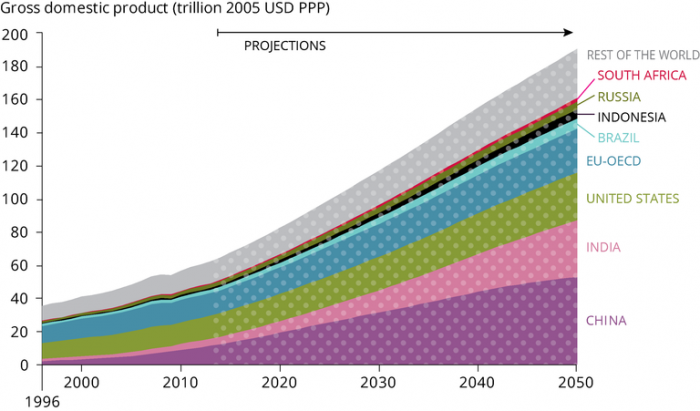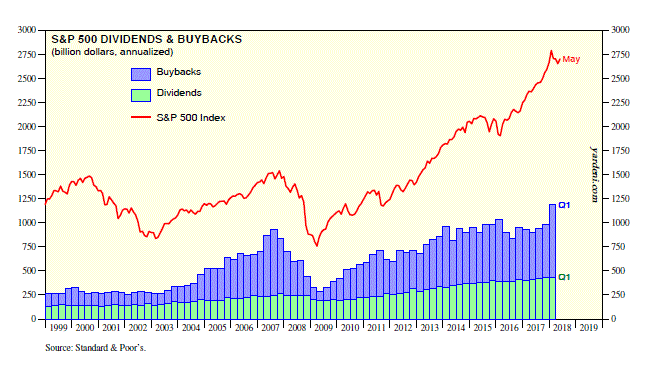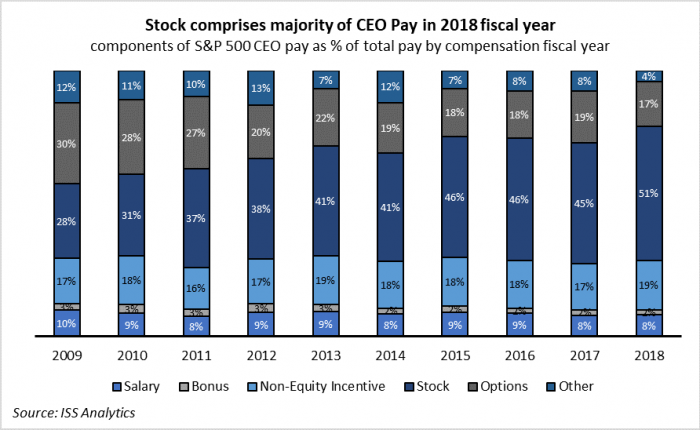The past 30 years has seen the HR function change from the post-personnel time of welfare, disciplinaries and training courses through the ‘place at the table’ period when people were our greatest asset, to the current Human Capital Management, 3 Box Ulrich++ model. The profession peaked as a multiple stakeholder influencer but has now become a function whose key responsibility is cost control and protecting shareholder return. HR’s role has mirrored the changes in business and economics. It is now time for HR professionals to re-assert their leadership to build new ways of working that create sustainability for organisations and their people.
The Covid-19 pandemic casts a new light on people at work and society:
- Businesses did not wait to see what support provisions would be made by government. 20 million Americans have been fired and 1/3rd of all UK under 25-year olds have lost their jobs. Companies can now be measured by how they prioritised the needs of their people, their customers, their shareholders and the communities in which they operate.
- The front-line workers needed to keep the world going during the crisis are almost always in the lowest paid parts of society.
- How able are nations to manage the needs of their people in a time of crisis? Have they got the resources and industries they need available to them or are they overly reliant upon global supply chains?
- The Covid-19 pandemic is not a great leveller. The likelihood of contracting the virus, being tested, and the treatments available are greatly affected by the economic status, role and race of people.
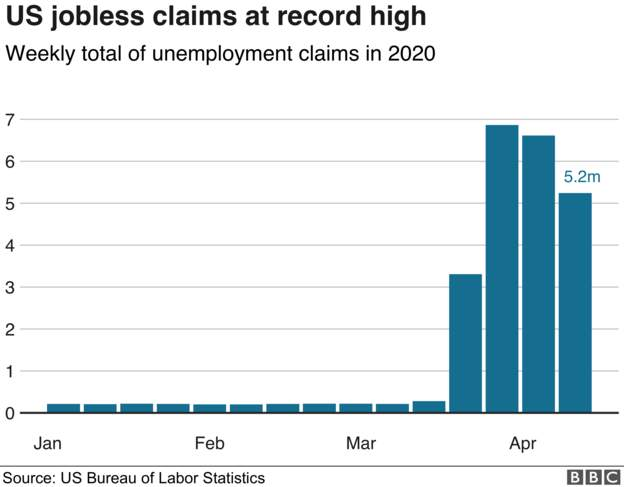
Source: US Bureau of Labor Statistics
There are many positive things happening in the world:
- People are pulling together and supporting each other in a crisis – the million volunteers who signed up to support the NHS in UK and the school technicians using their 3D printers to make face shields.
- People are endlessly creative and innovative and they need and want a sense of belonging and purpose: factories turning their production over to meet the needs of the NHS; individuals changing roles to find new income when their old job has disappeared.
- People can work flexibly/from home in many roles where previously this may have been denied as an option.
- There is love everywhere you look for the NHS and core workers. A 99-year-old war veteran is able to raise £28million for the NHS. People instinctively care for each other as human beings going through a common crisis.
- The change from our normal patterns of living has already had a significant positive effect on the levels of pollutants in the atmosphere and on our planet.
Time to Reset the Clock?
It is possible that the future world may look back at the Covid-19 epidemic as the catalyst for a better way of living that protected our world from looming global issues that had the potential to create a full scale human existential crisis.
Since 1947 the members of the Bulletin of the Atomic Scientists have evaluated the world in the context of global issues that have negative consequences for humanity. They summarise the total risk using a clock with its hands set towards midnight based upon the lifespan of mankind on the planet. The initial clock was set at 7 minutes to midnight. At its most optimistic in 1991 the clock was set back to 17 minutes to midnight.

Source Bulletin of the Atomic Scientists
Directly prior to the Covid-19 pandemic the clock was at its most pessimistic ever setting at 100 seconds to midnight. The twin causes of this are the continued failure to combat climate change and increased global tensions between the US, Russia and Iran potentially leading to nuclear exchanges. According to this measure the world was in a far from secure place even before the pandemic began.
The End of the Neoliberalism Experiment.
During the last 40 years the dominant economic doctrine has been Neoliberalism. The model idolises the value of free market competition and easy movement of trade and capital. Its core belief is that sustained economic growth is the means to achieve human progress and that the most efficient allocation of resources comes with minimal state intervention in economic and social affairs. In realty the application of this model has had the following effects:
- Extreme and increasing income inequality and a growing gap between the haves and have-nots. In 2010, the 10 richest people in the world had total wealth of $296.8 billion as compared to $822.5 billion now. The world’s wealthiest 26 individuals possess the same amount of wealth as the poorest half of the global population. In the last 10 years the wealth of the world’s billionaires increased by $900 billion while the wealth of the poorest half of the population (3.8 billion people) fell by 11%. Jeff Bezos is currently the richest person in the world and has seen his personal fortune grow by $26 billion to £140 billion over the last few weeks as a consequence of the virus.
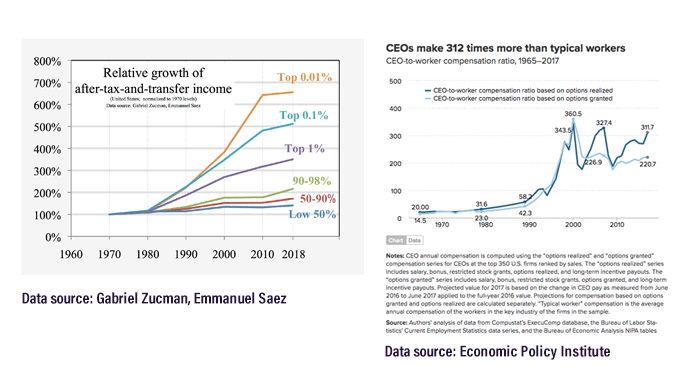
- Neoliberalism theory suggests that everyone benefits through the trickle-down effect of growing economies. In 1975 the average S&P 500 CEO compensation package was 25 times that of the median worker in the company. By 2017 this ratio was 312 and core worker wages have stagnated. In the last 15 years the number of working poor people continues to grow in the EU and USA. There is no trickle-down effect.
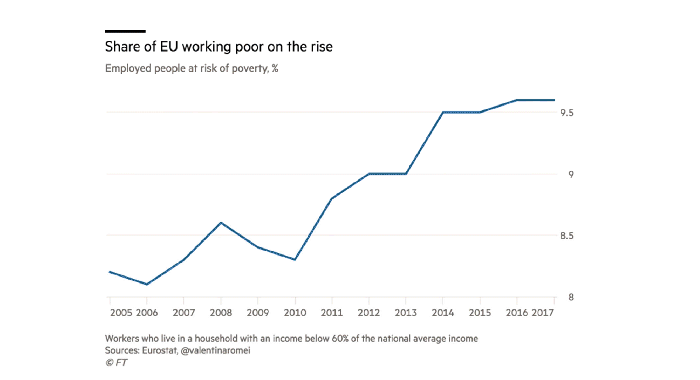
Businesses measure success by growth in revenue, profits and shareholder returns. Countries measure their success in a similar way with the assumption that growth in GDP will create more wealth and taxes to use for the public good. Global GDP is expected to double in the next 25 years. The environmental and social price of this growth is almost certainly too high.
Source European Environment Agency
- The financialization of business has progressed unchecked for the last 40 years with an increased focus on protecting shareholder return. In the US the Finance sector accounts for only 4% of jobs and 7% of GDP yet takes 25% of all corporations’ profits to pay for the fast growth, high interest investment it provides. The thirst for shareholder return has seen a surge in corporate stock buy backs that inflate stock market prices, benefit the compensation of CEOs but redirect money away from employees, the community and R+D.
- The compensation packages of CEOs are ever-more linked to share price with a shift of CEO stock related compensation from 28% in 2009 to 51% in 2018. There is evidence that the higher the proportion of CEO compensation that is directly linked to stock the worse the medium to long term performance of the business.
- Neoliberalism casts the privatization of public services as a good thing. The public sector is demonized as inefficient by the media and degraded by reduced funding, then deregulated and sold off piecemeal to private companies who not only have to provide a better service but have to provide a shareholder return.
- The effective and good traits of society: sharing of wealth, supporting each other, collaborating are seen as positive and beneficial only for the wealthy class with clubs, meetings, conferences, mergers, joint ventures and a closed community based on status and wealth. The reduction of collective working-class influence and power was central to the rhetoric and law changes of the governments of the 1980s.
- The gap between the theory of Neoliberalism and the reality of its implementation is ignored by its advocates. The free market is usually presented as underpinning all that is good in the world with reduced restrictions on trade and the private sector. When things go wrong its always some else’s fault: ‘Government policy remained too restrictive or the workers or leaders let the company down’. ‘How could my privatised care home business succeed with such low margins?’ ‘The 2008 crash was caused by human greed in selling sub-prime mortgages backed by poor credits and false evaluations.’ At times of global crisis in banking in 2008 and during the Covid-19 pandemic governments stepped in to save businesses that had previously resisted interference.
- Global Tax regulations have not kept pace with globalisation of the big corporates. Many of the worlds biggest companies have avoided paying any corporation taxes. They have moved the expense lines of their businesses to countries with low taxes or based themselves from tax havens.
Time for a New Economic System
People growing up in the last 40 years may be forgiven for thinking that the current way of running the planet is the only way. It is not. We have made choices. We can make new ones.
Mark Carney the retiring governor of the bank of England has written in the Economist this week that the pandemic could cause a fundamental shift in how companies in future will be judged based on how they treated people in the crisis. There is a growing body of economists challenging the status quo and providing options to take the world in a fresh direction:
- Mariana Mazzucato: The Value of Everything 2018
- Rana Foroohar: Makers and Takers 2016
- William Lazonick and Jang-Sup Shin: Predatory Value Extraction 2020
- Kate Raworth: Doughnut Economics 2017
They all argue we can choose to develop a system that:
- Balances the need for business and the sustainability of the planet.
- Places a value on both state and corporations finding synergy between the market and the social security and health needs of everyone.
- Is genuinely inclusive and that truly values all people by providing everyone with a living standard and the psychological safety needed for wellbeing, confidence and growth.
Doughnut Economics
The Doughnut Economics model consists of two rings. The inner ring of the doughnut represents a sufficiency of the resources we all need to lead a good life: food, clean water, housing, sanitation, energy, education, healthcare, democracy. Anyone living inside that ring, in the hole in the middle of the doughnut, is in a state of deprivation. The outer ring of the doughnut consists of the Earth’s environmental limits, beyond which we inflict dangerous levels of climate change, ozone depletion, water pollution, loss of species and other assaults on the living world.
The area between the two rings – the doughnut itself – is the “ecologically safe and socially just space” in which humanity should strive to live. The purpose of economics should be to help us enter that space and stay there.
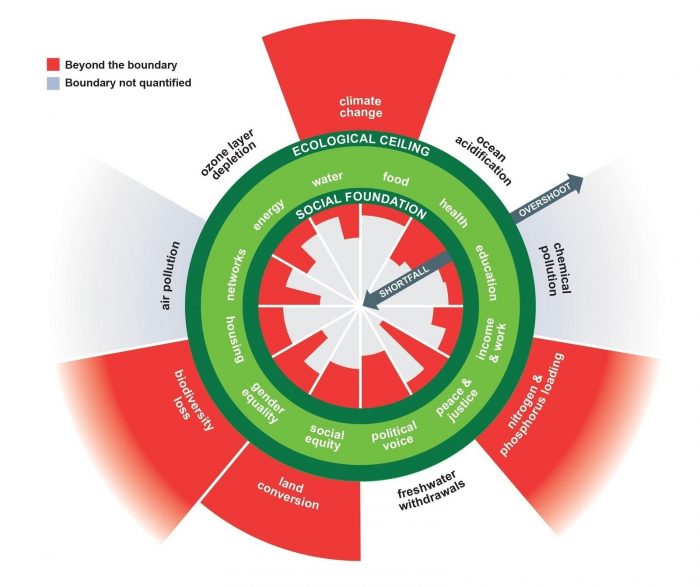 As well as describing a better world this model allows us to see the state in which we now find ourselves. At the moment we transgress both boundaries. Billions of people still live in the hole in the middle. We have breached the outer boundary in several places.
As well as describing a better world this model allows us to see the state in which we now find ourselves. At the moment we transgress both boundaries. Billions of people still live in the hole in the middle. We have breached the outer boundary in several places.
The model suggests that we should focus our energies on ensuring that the world and its people live within the boundaries of the Doughnut.
Eating the Doughnut in Business
Businesses will have different attitudes to the Doughnut model and based on what we see of current approaches to climate change initiatives Raworth points out they will:
- Do nothing
- Do what pays
- Do their share
Or decide that the reason we are in business is to Eat the Doughnut!
What would happen if, following the Coronavirus outbreak, every business in the world decided that their primary purpose had to be underpinned by its principles?
Amsterdam Council is going to adopt the Doughnut economic model in its virus exit Strategy.
Deputy Mayor Marieke van Doorninck invoking her city’s current housing crisis as an example. The doughnut does not deliver answers, she said, so much as a way of looking at a problem “so that we don’t keep on going on in the same structures as we used to.”
This, for Raworth, is the core lesson to be learned from the pandemic. “The world is experiencing a series of shocks and surprise impacts, which are enabling us to shift away from the idea of growth to ‘thriving. Thriving means our well-being lies in balance. This is the moment we are going to connect bodily health to planetary health.”
Applying Doughnut economics to business looks something like this:
- Structure the business so it has a positive effect on each of the 9 external boundaries and protects its stakeholders including employees from falling into the hole in the middle.
- Define and communicate the purpose of the business and the values by which it will operate. Ensure everyone has these as their mantra.
- Have a plan for cash and source of funds that is diverse with providers who are willing to play the long game with the company.
- Build powerful internal and external networks.
- Make sure everyone in the business and its supply chain is paid enough so they do not go to bed at night worrying about how they will pay their bills.
- Be growth agnostic – only grow if you can show it helps the planet.
- Agree up front where you will spend profits and include provision for fair sharing with employees and the community (including fair payment of taxes)
- Encourage employee ownership of the business and ensure that the balance of ownership does not distract from the purpose and values of the business – even when times are tough.
- Make your business distributive and regenerative by design – it is planned into the business design how value will spread to all stakeholders and in the product life cycle there is no waste.
Role of the People (HR) Team from 2020
To establish a refreshed role, HR teams will need to be brave, challenging and work together to assert professional standards and create better and more consistent systems in which people can flourish. Shaping our organisations, leaders and ensuring the best way to work is a huge responsibility for those working in HR.
The core role of the People Team is to ensure the purpose, culture and values of the organisation fully connect the stakeholders:
- A business culture that distributes value to its customers, employees and investors and provides an ecological benefit to the planet.
- An organisation that integrates with the communities in which it operates, and contributes to diversity inclusion, and belonging and to social mobility through its hiring and career development programmes.
- The voice of the employee is listened to and advocated for in each decision made by the company.
- An organisation designed to ensure sustainable profits that balance job security without exceeding the boundaries of the Doughnut Model.
- An Investors / Shareholder system that recognises the long-term benefits of the way the company is led and run.
People Team focus is closer to the Key Workers
The Coronavirus has identified the key workers needed to keep business and society afloat in a crisis. They are smart, they know the problem and the solution, and our customer needs them. People (HR) Team structures need to shift from a few strategic relationships with senior leaders to be the connector for the business, understanding the situation of each layer from front line to executive. They need to ensure there are clear plans to fill communication or skills gaps at each level and create inclusive career and information flows.
People Team role to create an abundancy of talent and You are included!
More than a million UK people volunteered (for free) to help their neighbours during the crisis. Hundreds of thousands went out to find new roles when their old job suddenly disappeared. People want to be included and to have a mission in life and to help. The People Team’s role is to ensure their business has a clear purpose and lets everyone know how they are important and how they can play a part. The People Team has a key role to ensure the way the company purpose is described and how it is communicated energises people and pulls the team together.
The People Team needs to ensure all leaders have the core skills needed to coach and connect people to the business purpose, their colleagues and their own strengths. It needs to create a Growth Mindset environment where everyone can be involved and develop.
The People Team needs to be expert at building career networks that give employees the broadest and most diverse set of opportunities for learning and take the lead in designing organisation and career structures that meet the needs and demands of the individual, the organisation and society.
The People Team’s role is to build a new employer-employee paradigm – CAP
- Commercial – we are here to create a viable business that adds value to the world by designing, making, selling, servicing and receiving income for our products. We have a commercial relationship and define what good looks like for each person in the success of the organisation.
- Adults – we are all adults so the basis of how we communicate is straightforward and as grown up human beings. This may be challenging but is always done with mutual respect.
- Partners – no matter whether the organisation chart says we are peers, or one of us sits in a position of hierarchy we commit to collaborate in how we work together to achieve success. We are partners and in this together – we won’t just dispense with each other at the first sign of challenge. We are committed to each other.
The People Team’s role is to build a new leadership and teamworking model
This pandemic has polarised leaders. There are those who are able to provide effective coaching that connects their team, puts them in control and in a state of confidence to deliver great performance whilst demonstrating true care for them as people, and those that have nagged and micromanaged their way through the crisis. People will look back at how they were treated during April 2020 and consider what they need in future from their company and especially from their leader.
Employees will expect more of their leader and the value they bring to the CAP relationship both for them as an individual and for the team(s) in which they operate. The team environment needs be based upon building strong connections and appreciating our diversity and personal needs – we have received new windows on each other’s lives during the current crisis and this could provide a better foundation for future work together.
We need our leaders to have core skills in developing outstanding teams where they build trust amongst the team. They need to encourage effective debate and productive conflict leading to high levels of commitment and personal desire to be accountable for success and results. They are able to do this equally well with co-located and remote teams. It is the People Team’s role to provide the support, coaching, models and training so that as many leaders as possible can make it into the new paradigm.
When we come to measure leader performance, we focus on how they have grown their people and their teams and the depth of engagement their people feel working around here before we talk about the results.
The People Team’s role in creating Deep Employee Wellbeing
The pandemic has been a testing time for many people with multiple aspects of their wellbeing simultaneously challenged. As we emerge from this period the People Team will need to ensure the business is able to make an authentic contribution to each aspect of wellbeing for its people:
- A clear understanding, standards and expectations that the physical safety of people is paramount.
- Creating psychological safety and personal value is a focus for every leader.
- An understanding of how the company will support financial security for its people at difficult times in the future.
And finally, to summarise how to measure success of the People Team in the Post Pandemic world…
- Do I feel a sense of belonging and inclusion and am I treated as a valued partner to the business – knowing that my needs will be a priority if times are tough?
- Can I build a career here with confidence?
- Is my leader able to have Commercial, Adult and Partner based conversations with me where we can share what good looks like and build our relationship and my contribution?
- Does my business put more back into the world and communities in which it operates than it takes?
- Is the principal measure of a leader’s success how well they have helped their people and team to grow?
- Has the People team achieved the right balance of focus for the Stakeholders of the organisation and is it close enough to the core workers of the organisation to advocate on their behalf?

